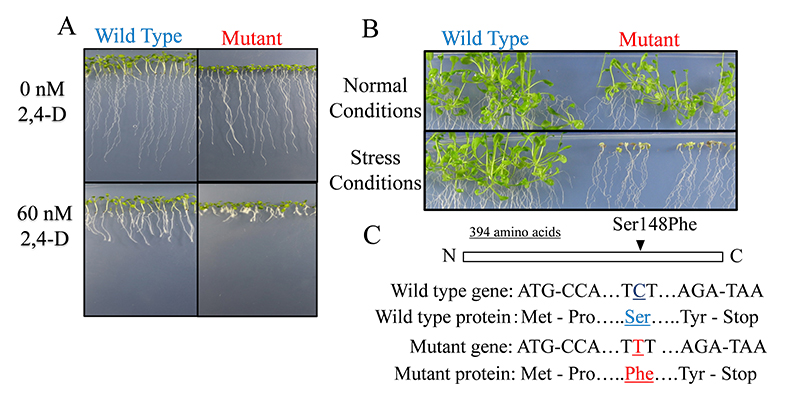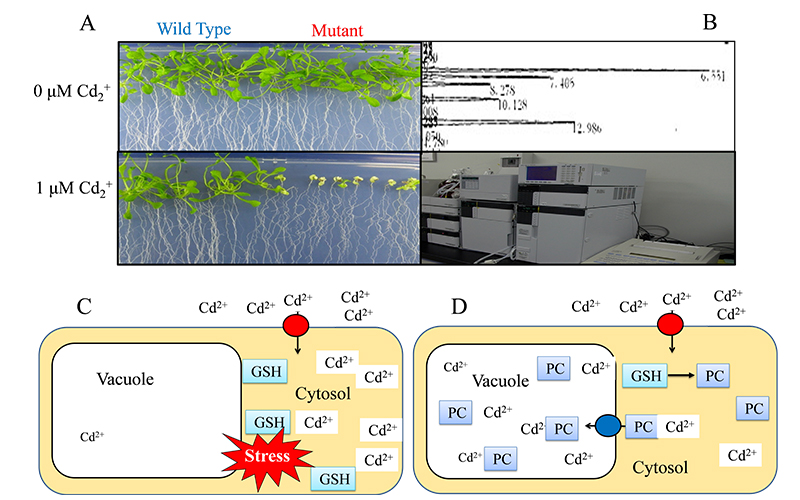Rafael Prieto
Associate Professor, Ph.D. in Science
- prieto.rafael

- Areas of Research
- Plant Molecular Physiology, Plant Molecular Genetics, Plant Biotechnology
- Profile
- Research
-
Coming from Cordoba, Spain, Dr. Rafael Prieto received his Ph.D. in Science from the Department of Biochemistry and Molecular Biology at the University of Cordoba. He then went on to conduct postdoctoral research at Purdue University’s Center for Plant and Environmental Stress Physiology and Department of Botany and Plant Pathology. He was also a postdoctoral researcher and special collaboration researcher at the Nara Institute of Science and Technology in Japan. He served as a lecturer at Kyoto University of Advanced Science and is now an associate professor at the same institution.
Subjects that Dr. Prieto teaches include Molecular Biology, Plant Physiology, Experimental Course in Plant Science, Startup Seminar, Seminar on Future Design, Career Field Experience, Science Projects, Seminar on Specialized Scientific Topics, and Graduation Research.
Dr. Prieto enjoys reading, listening to music, watching movies and sports, driving, and traveling on his free time.
-
Functional characterization of genes involved in plant development and hormone responses
The plant hormone auxin, typified by indole-3-acetic acid (IAA), has been implicated in the regulation of plant growth and developmental processes such as cell division, expansion and differentiation, lateral root formation, organ patterning, phototropism and gravitropism. To understand the molecular mechanism of auxin-mediated responses, we are carrying out the isolation and characterization of Arabidopsis thaliana T-DNA insertional mutants selected based on root phenotypes associated with auxin sensitivity (Figure 1A). In this kind of project, we are mainly working on the isolation of mutants impaired in plant growth promotion, hormone responses, and/or adaptation to different environmental stresses (Figure 1B, C). The isolation and functional characterization of the genes responsible for each phenotype will help us to develop genetically modified plants displaying improved growth and/or resistance to environmental stress.

Figure 1. Comparison of 7-day-old wild-type and mutant seedlings grown in medium supplemented with and without the synthetic auxin 2,4-D (A). Wild-type and mutant seedlings were grown for 12 days under normal conditions and environmental stress conditions (B). Molecular characterization of a gene involved in adaptation to environmental stress. A comparison of wild-type and mutant nucleotide sequences identified a single C to T mutation, which resulted in the replacement of serine by a phenylalanine residue (C).
Functional characterization of genes involved in the adaptation of plants to environmental stress
Plants growing under natural conditions are subjected to abiotic stresses such as temperature, drought, salinity, light, heavy metals, and biotic stresses such as bacteria, viruses, fungi, insects, etc. These environmental stresses can delay the growth, and development of plants, and reduce crop productivity. Glutathione (GSH, γ-L-glutamyl-L-cysteinyl-glycine), which is a tripeptide conserved in most organisms, has been implicated in a multitude of cellular functions, such as protection of cells against oxidative stress, detoxification of xenobiotics via degradation of GSH S-conjugates, disease resistance, etc. Glutathione also serves as a precursor of phytochelatins (PCs) and thereby plays an essential role in heavy metal detoxification. We are working on the isolation and characterization of Arabidopsis thaliana mutants affected in GSH metabolism, and mutants with altered sensitivity to heavy metals such as cadmium (Figure 2). The isolation and functional characterization of the genes responsible for each phenotype will help us to develop genetically modified plants resistant to environmental stress, and plants suitable for phytoremediation (use of living plants to clean up contaminated soil, water, and air).

Figure 2. Isolation of mutants hypersensitive to cadmium. Wild-type and mutant seedlings were grown for 12 days in a medium supplemented with and without 1μM Cd2+ (A). High-Performance Liquid Chromatography (HPLC) analysis of GSH metabolism (B). Adaptation of plants to Cd2+ stress. GSH is polymerized to PCs, which detoxify heavy metals such as Cd by forming complexes that are then transported into the vacuole (C, D).